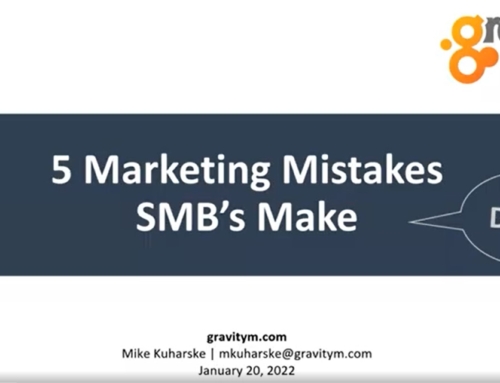Customer Relationship Management software is meant to manage your customer relationships, not just your customer contact information. Seems obvious, but many companies skip a few important first steps when implementing their CRM, and then find that their teams avoid leveraging this helpful tool.
Follow these steps when planning and implementing your CRM to prevent it from becoming a glorified (and expensive) rolodex.
Step 1: Your CRM should reflect your business process.
- Take the time to map your process. How does a stranger become a customer? Creating a flow chart will identify critical stages of your buyer’s journey and might even reveal a few spots where prospects drop out that can be strengthened.
- Decide how to use your CRM to make life easier. What tasks can be automated to take the load off your staff? For example, connect your website forms to your CRM so that important new contacts are not lost in inboxes. Make monthly email “touches” an automated workflow. If the CRM makes life easier, your staff is more likely to use it.
- Identify the kinds of information you need to make business decisions. Make sure you collect that information as part of your business process and create fields in the CRM to save it. Doesindustry type, shirt size, or birthdate matter? Collect and save it so that you can sort and report.
- Create and customize reports and dashboards. This is where all that work in putting data in pays off. Staff and team leaders can see progress on key measures at any time. Hours of spreadsheet work and aggravation can be saved if you automate a manual reporting process everyone is already used to.
Step 2: Plan enough time for the right kind of training.
- It is not enough to have the CRM company show people how to use the software. Your team has to understand how your company will use it as a business tool to make their life easier. Explain how and why the CRM is integrated into the business processes. Cheat sheets that are helpful include company guidelines for use, screen grabs with helpful tips, or apples to apples comparison of the old way vs. the automated way.
- Follow-up training is critical. In the first month(s), the staff will be focused on learning the software as they go. Once beyond that hurdle, they will be more aware and have additional questions about how to best use the system to make their processes better. This also is a good time to separate the CRM champions and quick learners from the resistors and slower learners. Give individual attention early and often to avoid inconsistency down the road.
- Identify an internal CRM expert. There needs to be someone easily available to ask “how do I…” That person doesn’t need to have all the answers (especially to start), but they will need to reserve time during work hours for helping people and conducting research.
Step 3: Incentivize intelligently
- No exceptions – everyone must participate. It is tempting to allow certain individuals to opt out. Remember that the CRM should be integrated into the actual business process. If someone is opting out of that process, that is more than a CRM issue.
- Whether it is a contest or per-person goals, reward usage in a meaningful way in the beginning. As your employees become proficient users, continue to reward them for finding ways to better use the CRM to meet goals or improve processes.
- Management should lead by example.
Your CRM is more than just a time-saver for individual employees. Keeping records and reports of customer relationships can be an invaluable tool to the overall success of your business. Thoughtful implementation will get you started on the right path.








